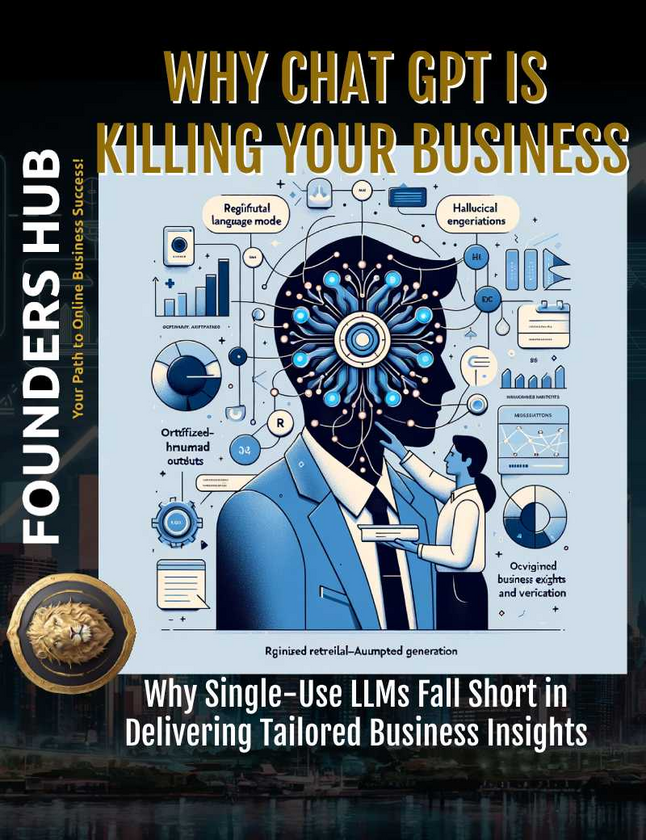In today's digital age, online scams have become an increasingly prevalent threat to businesses of all sizes. From phishing attacks to malware infections, these malicious activities can cause significant financial losses, data breaches, and reputational damage. As cybercriminals continue to evolve their tactics, it's crucial for businesses to stay vigilant and proactively protect themselves against these threats. This comprehensive guide will equip you with the knowledge and strategies necessary to safeguard your business from online scams, including call center, text, and email scams.
Key Takeaways:
- Online scams, such as phishing attacks, pose a significant risk to businesses, with over twice as many incidents of phishing than any other type of cybercrime in 2020.
- Scammers use various tactics, including email, text messages, and phone calls, to trick individuals into revealing sensitive information or downloading malware.
- Implementing robust security measures, enabling multi-factor authentication, backing up data regularly, and verifying the authenticity of communications are essential steps in protecting your business.
- Staying informed and providing ongoing cybersecurity training for employees is crucial to maintaining a strong defense against online scams.
Become a supporter to access our exclusive members only content
Understanding Phishing Attacks
Phishing attacks are one of the most common and dangerous forms of online scams targeting businesses. These attacks involve scammers using deceptive tactics to trick individuals into revealing sensitive information or granting access to their systems.
Definition and Common Tactics
Phishing is a type of social engineering attack where cybercriminals attempt to acquire sensitive information, such as login credentials, credit card details, or personal data, by masquerading as a trustworthy entity. These attacks often exploit human vulnerabilities, such as fear, curiosity, or a sense of urgency, to manipulate victims into taking actions that compromise their security.
Common tactics used in phishing attacks include:
- Link manipulation: Scammers create fake websites that mimic legitimate ones and send links to these sites, tricking users into entering their login credentials or other sensitive information.
- Email spoofing: Attackers forge the sender's email address to make it appear as if the message is coming from a trusted source, such as a bank, government agency, or well-known company.
- False urgency and scare tactics: Phishing emails or messages often create a sense of urgency or fear, pressuring the recipient to act quickly without verifying the legitimacy of the request.
Types of Phishing Attacks
Phishing attacks can take various forms, each exploiting different communication channels and tactics.
Email Phishing
Email phishing is one of the most common types of phishing attacks. Scammers send fraudulent emails that appear to be from legitimate sources, such as banks, online retailers, or service providers. These emails often contain suspicious links or attachments that, when clicked or opened, can lead to the installation of malware or the theft of sensitive information.
Common characteristics of email phishing attacks include:
- Suspicious links or attachments
- Requests for personal or financial information
- Urgent or threatening language
- Poor grammar or spelling errors
Real-life examples of email phishing attacks have had devastating consequences for businesses. In 2020, a major corporation fell victim to a sophisticated phishing attack, resulting in the loss of millions of dollars and sensitive customer data.
Text Phishing (Smishing)
Text phishing, or "smishing," is a type of phishing attack that targets mobile devices through text messages. Scammers send fraudulent text messages that appear to be from legitimate sources, such as banks or service providers, and often include shortened URLs or a sense of urgency to prompt immediate action.
These text messages may claim that the recipient's account has been compromised or that they need to take immediate action to prevent a financial loss. By clicking on the malicious links, victims may inadvertently download malware or reveal sensitive information to the scammers.
A recent example of a smishing attack targeted customers of a major financial institution, tricking them into revealing their login credentials and enabling the scammers to access their accounts and steal funds.
Call Center Phishing (Vishing)
Call center phishing, or "vishing," involves scammers using phone calls to trick individuals into revealing sensitive information or granting access to their systems. In these attacks, scammers may pose as representatives from legitimate organizations, such as banks, government agencies, or tech support companies.
During the call, scammers may use various tactics to gain the victim's trust, such as providing false credentials or referencing personal information obtained through other means. They may then request sensitive information, such as login credentials, credit card numbers, or Social Security numbers, under the guise of verifying the victim's identity or resolving a supposed issue.
A notable example of a vishing attack occurred in 2019, when scammers impersonated representatives from a major software company and tricked individuals into granting remote access to their computers, leading to the installation of malware and the theft of sensitive data.
Scam Websites and Malware
In addition to phishing attacks, businesses must also be aware of the risks posed by scam websites and malware infections.
How Scammers Create Fake Websites
Scammers often create fake websites that mimic the appearance and functionality of legitimate sites to deceive unsuspecting victims. These scam websites may be used for various malicious purposes, such as collecting sensitive information, distributing malware, or conducting financial fraud.
Characteristics of scam websites include:
- Lack of security certifications (HTTPS)
- Poor design and grammar errors
- Suspicious or unfamiliar domain names
- Requests for sensitive information without proper authentication
Scammers may also use techniques like typosquatting, where they create domain names that are similar to legitimate ones but with slight misspellings, to trick users into visiting their fake websites.
Risks of Malware and Ransomware
Malware, short for malicious software, is a broad term that encompasses various types of harmful programs designed to disrupt computer systems, steal data, or gain unauthorized access. Scam websites and phishing attacks are common vectors for malware distribution, as cybercriminals often embed malicious code or links within these platforms.
One particularly dangerous form of malware is ransomware, which encrypts a victim's files and demands a ransom payment in exchange for the decryption key. Ransomware attacks can have devastating consequences for businesses, leading to data loss, operational disruptions, and significant financial losses.
In 2021, a major logistics company fell victim to a ransomware attack, resulting in a global supply chain disruption and an estimated loss of over $200 million.
| Malware Type | Description | Potential Impact |
|---|---|---|
| Trojans | Disguised as legitimate software but contain malicious code | Data theft, system disruption |
| Viruses | Self-replicating programs that spread across systems | Data corruption, system crashes |
| Worms | Self-replicating programs that spread through networks | Network congestion, system crashes |
| Spyware | Secretly collects user information and data | Privacy violations, data theft |
| Adware | Displays unwanted advertisements on infected systems | System slowdown, privacy concerns |
It's crucial for businesses to implement robust security measures, such as antivirus software, firewalls, and regular software updates, to protect against malware infections and minimize the risk of data breaches and operational disruptions.
Protection Measures
Protecting your business from online scams requires a multi-layered approach that combines technical solutions, employee education, and best practices.
Using Security Software and Multi-Factor Authentication
One of the most effective ways to safeguard your business against online scams is by implementing robust security software and enabling multi-factor authentication (MFA).
Security Software: Reputable security software, such as antivirus programs, firewalls, and intrusion detection systems, can help protect your systems from malware infections and unauthorized access attempts. It's essential to keep these software solutions up-to-date with the latest security patches and definitions to ensure optimal protection against emerging threats.
Multi-Factor Authentication (MFA): MFA adds an additional layer of security by requiring users to provide multiple forms of authentication, such as a password and a one-time code sent to their mobile device or a biometric factor like a fingerprint or facial recognition. By implementing MFA, you can significantly reduce the risk of unauthorized access, even if a user's password is compromised.
Implementing MFA in a business environment may require some initial setup and employee training, but the added security benefits make it a worthwhile investment. Many popular cloud-based services and applications offer built-in MFA capabilities, making it easier to enable this security feature across your organization.
Backing Up Data and Being Cautious with Urgent Requests
Regular data backups and a cautious approach to urgent requests are essential components of a comprehensive cybersecurity strategy.
Regular Data Backups: Maintaining regular and automated data backups is crucial for protecting your business against data loss resulting from cyber attacks, hardware failures, or other unforeseen events. Best practices for data backup include:
- Using reliable backup solutions, such as cloud-based services or external hard drives
- Implementing a backup schedule that aligns with your business's data generation and retention policies
- Storing backup data in a secure, off-site location to prevent data loss in the event of a physical disaster
Caution with Urgent Requests: Scammers often rely on creating a sense of urgency to pressure victims into taking immediate action without verifying the legitimacy of the request. It's essential to exercise caution when receiving unexpected or urgent requests, especially those that involve sensitive information or financial transactions.
Establish clear protocols for verifying the authenticity of communications, such as contacting the sender directly through a verified channel or cross-referencing the request with official sources. Encourage employees to report any suspicious or urgent requests to your organization's cybersecurity team or IT department for further investigation.
Verification Techniques
In addition to implementing robust security measures, it's crucial to equip your employees with the knowledge and skills to verify the authenticity of communications and websites.
Checking Sender's Email Address and Domain Name
One of the most effective ways to identify potential phishing attempts is by carefully examining the sender's email address and domain name. Legitimate organizations typically use their official domain names for email communications, while scammers often use spoofed or suspicious-looking email addresses.
When reviewing an email, pay close attention to the following:
- The domain name in the sender's email address (e.g., @example.com)
- Any misspellings or unusual characters in the domain name
- The use of subdomains or unfamiliar domains
Additionally, you can inspect the email headers for more detailed information about the sender's email server and IP address, which can help identify potential spoofing attempts.
Verifying Website Security
When visiting a website, especially one that requires sensitive information or financial transactions, it's essential to verify its security and authenticity. Here are some key indicators to look for:
HTTPS and the Lock Icon: Secure websites use the HTTPS protocol, indicated by the lock icon in the address bar. This ensures that the data transmitted between your browser and the website is encrypted, protecting it from interception by third parties.
SSL/TLS Certificates: Legitimate websites should have a valid SSL/TLS certificate issued by a trusted Certificate Authority (CA). You can typically view a website's certificate by clicking on the lock icon in the address bar.
Website Content and Design: Carefully examine the website's content, design, and overall user experience. Scam websites often have poor grammar, inconsistent branding, or other telltale signs of being illegitimate.
If you have any doubts about a website's legitimacy, it's best to avoid entering sensitive information or conducting financial transactions. Instead, contact the organization directly through a verified channel to confirm the website's authenticity.
Conclusion
In the ever-evolving landscape of cybersecurity threats, protecting your business from online scams requires a proactive and comprehensive approach. By understanding the tactics used by scammers, implementing robust security measures, and educating your employees on verification techniques, you can significantly reduce the risk of falling victim to phishing attacks, malware infections, and other malicious activities.
Remember, cybersecurity is an ongoing process, and staying vigilant and informed is crucial. Regularly review and update your organization's cybersecurity policies and procedures, and encourage employees to report any suspicious activities or potential threats.
Investing in employee training and awareness programs can also go a long way in fostering a culture of cybersecurity within your organization. By empowering your team with the knowledge and skills to recognize and respond to online scams, you can create a strong line of defense against these threats.
Ultimately, protecting your business from online scams requires a comprehensive and proactive approach that combines technical solutions, best practices, and a commitment to ongoing education and vigilance. By taking these steps, you can safeguard your business, protect your valuable data, and maintain the trust of your customers and stakeholders.
Become a supporter to access our exclusive members only content



















